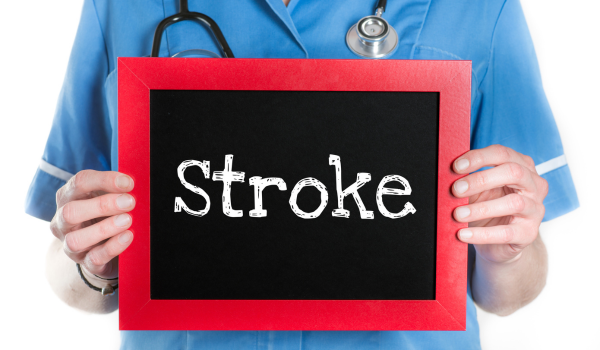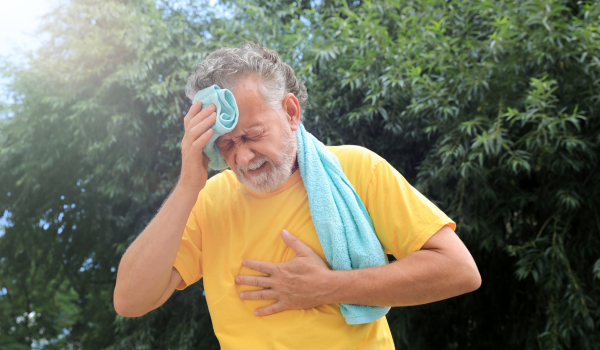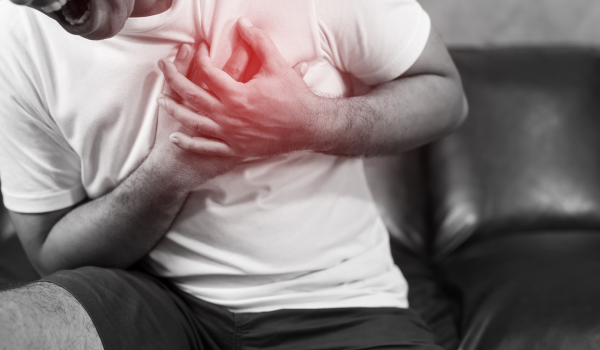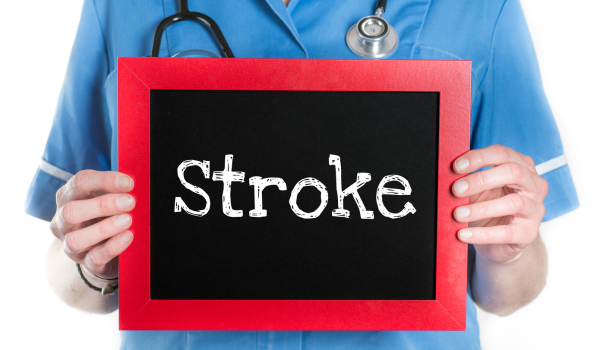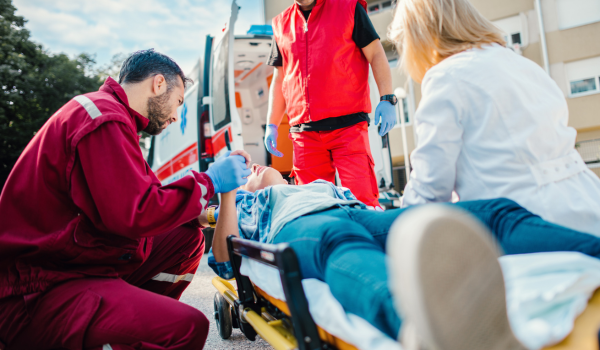.png)
Why they’re often confused
Both stroke and heart attack strike suddenly and without much warning. They are both medical emergencies, result from interrupted blood flow, and can cause severe damage to vital organs. But despite their similar presentation, they affect entirely different parts of the body. The confusion is common, but understanding how they differ—and how they're alike—could save a life.
What is a stroke?
A stroke occurs when blood flow to a part of the brain is blocked or reduced, depriving brain tissue of oxygen and nutrients. This causes brain cells to die within minutes. There are two main types of stroke:
-
Ischemic stroke, which results from a blockage (such as a blood clot).
-
Hemorrhagic stroke, caused by bleeding in or around the brain.
A transient ischemic attack (TIA) or "mini-stroke" is also common and serves as a warning sign of a full-blown stroke.
What is a heart attack?
A heart attack, medically known as myocardial infarction, happens when blood flow to part of the heart muscle is severely reduced or cut off, typically due to a blocked coronary artery. Without oxygen-rich blood, the heart tissue begins to die.
Most heart attacks are caused by a buildup of plaque—fatty deposits and cholesterol—in the arteries, which can rupture and trigger a clot.
Main differences
Here are the key distinctions between the two:
-
Organ affected: Stroke affects the brain; heart attack affects the heart.
-
Cause: Stroke usually stems from a clot in the brain; a heart attack is due to blockage in the heart’s arteries.
-
Symptoms: Stroke signs are neurological (speech, movement, vision); heart attack symptoms are more physical (chest pain, shortness of breath).
-
Treatment: Stroke may involve clot-busting drugs or surgery; heart attack treatment includes stents, angioplasty, or bypass surgery.
Shared risk factors
Despite their differences, strokes and heart attacks share many of the same risk factors:
-
High blood pressure
-
Smoking
-
High cholesterol
-
Obesity
-
Diabetes
-
Sedentary lifestyle
-
Family history of cardiovascular disease
Managing these factors is essential for preventing both conditions.
Warning signs of stroke
The acronym BE FAST is a useful way to remember stroke symptoms:
-
Balance: Sudden loss of balance or coordination
-
Eyes: Trouble seeing in one or both eyes
-
Face: Face drooping, uneven smile
-
Arms: Weakness or numbness in one arm
-
Speech: Slurred or strange speech
-
Time: Time to call emergency services
Other signs may include confusion, difficulty walking, severe headache, or dizziness.
Warning signs of heart attack
The classic signs of a heart attack include:
-
Chest pain or discomfort (may feel like pressure, squeezing, or fullness)
-
Pain in arms, neck, jaw, or back
-
Shortness of breath
-
Cold sweat
-
Nausea or vomiting
-
Lightheadedness
Women may also experience atypical symptoms like fatigue, indigestion, or anxiety without chest pain.
When to call emergency help
Both stroke and heart attack require immediate medical attention. The sooner a person gets treated, the better their chances of survival and recovery. Call emergency services as soon as symptoms appear. Do not wait for symptoms to improve.
Quick action can help doctors:
-
Administer clot-busting drugs (within 3–4.5 hours for strokes)
-
Perform emergency angioplasty for heart attacks
-
Limit permanent damage
Diagnostic tools
For both conditions, doctors rely on various tools and tests:
-
Stroke:
-
CT or MRI of the brain
-
Carotid ultrasound
-
Blood tests
-
-
Heart attack:
-
ECG (electrocardiogram)
-
Blood tests (for troponin)
-
Coronary angiography
-
Echocardiogram
-
Time is crucial, so these diagnostics are performed quickly in the ER.
Treatment options
Stroke treatments depend on the type:
-
Ischemic stroke: Clot-dissolving drugs (e.g., tPA), mechanical thrombectomy
-
Hemorrhagic stroke: Surgery to stop bleeding, medications to reduce pressure
Heart attack treatments include:
-
Medications: Aspirin, thrombolytics, beta-blockers
-
Procedures: Angioplasty and stenting, coronary artery bypass surgery
-
Long-term care: Cardiac rehab, lifestyle changes
Recovery process
Stroke recovery may involve:
-
Physical, speech, and occupational therapy
-
Long-term rehabilitation
-
Managing post-stroke complications like depression or seizures
Heart attack recovery typically includes:
-
Cardiac rehabilitation
-
Dietary and exercise adjustments
-
Medication to prevent another attack
Recovery varies based on the severity and speed of treatment.
Long-term consequences
Strokes may lead to:
-
Paralysis or weakness
-
Cognitive problems
-
Speech difficulties
-
Emotional changes
Heart attacks can result in:
-
Heart failure
-
Arrhythmias
-
Reduced physical endurance
-
Increased risk of another heart attack
Preventing recurrence is a priority in both cases.
Who is at higher risk
You're at higher risk for stroke or heart attack if you:
-
Are over age 55
-
Have hypertension or diabetes
-
Have a family history of stroke or heart disease
-
Are a smoker
-
Live a sedentary lifestyle
-
Have high cholesterol or obesity
Women, particularly those with preeclampsia or who take oral contraceptives, may have unique risks.
Prevention tips
Lower your risk for both stroke and heart attack with these strategies:
-
Quit smoking
-
Eat a heart-healthy diet (low in salt, fat, and sugar)
-
Exercise regularly
-
Manage stress
-
Control blood pressure and cholesterol
-
Stay at a healthy weight
-
Get regular check-ups
For those with a history of either condition, follow medical advice strictly.
Final comparison table
| Factor | Stroke | Heart Attack |
| Affected Organ | Brain | Heart |
| Main Cause | Blocked or burst brain vessel | Blocked coronary artery |
| Symptoms | Slurred speech, facial droop | Chest pain, shortness of breath |
| Diagnosis | Brain imaging (CT, MRI) | ECG, blood tests |
| Emergency Treatment | tPA, surgery | Angioplasty, stents |
| Long-term Risk | Paralysis, speech difficulty | Heart failure, repeat attack |
Why it matters
Distinguishing between a stroke and heart attack isn't just a matter of medical accuracy—it’s the difference between life and death. Knowing what to look for, acting fast, and getting the right treatment could mean saving your life or that of a loved one.
Conclusion
While strokes and heart attacks share many characteristics, they are distinctly different in causes, symptoms, and treatments. Both are urgent medical conditions that require fast action. Learning how to tell them apart empowers you to respond better and faster in an emergency—and that knowledge could save a life.
.png)
.png)
.png)
.png)
.png)
.png)
.png)
.png)
.png)
.png)
.png)
.png)
.png)
.png)
